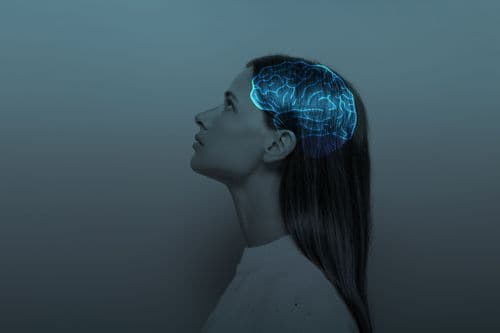A British engineer accidentally discovered why so many people report seeing ghosts in the same locations. The culprit isn't supernatural—it's a sound frequency so low you can't hear it, but your body can feel it. And it's been hiding in "haunted" buildings for centuries.
Vic Tandy was working alone in his lab one night in the 1980s when terror struck. The medical equipment manufacturing facility where he worked had a reputation for being haunted, but Tandy dismissed the stories as superstition. Then he felt it—an overwhelming sense of dead, cold sweat running down his back, and the unmistakable feeling that somethidng was watching him.
Out of the corner of his eye, he saw it: a gray, translucent figure floating in his peripheral vision. His hair stood on end. When he finally worked up the courage to turn and face it directly, the apparition vanished. Tandy, a rational scientist, fled the building convinced he'd seen a ghost.
The next day, he brought his fencing sword to work for repairs. When he clamped it in a vice, something bizarre happened—the blade began vibrating violently on its own, as if possessed. But Tandy's scientific mind kicked in. Something in the lab was causing the vibration. After investigation, he discovered a newly installed extractor fan was generating sound waves at 18.98 Hz—just below the range of human hearing.
This frequency is critical for one specific reason: it's almost exactly the resonant frequency of the human eyeball. When exposed to 19Hz infrasound, your eyeballs vibrate slightly, causing visual distortions in your peripheral vision. That dust mote or shadow suddenly looks like a full-blown apparition. The "ghost" Tandy saw was an optical illusion created by his own vibrating eyeballs.
But the visual hallucinations are just the beginning. Infrasound at this frequency causes a cascade of physiological effects: feelings of anxiety and dread, cold sweats, increased heart rate, nausea, and an overwhelming sense of an invisible presence. Every single symptom people report in "haunted" locations.
Tandy published his findings in the peer-reviewed Journal of the Society for Psychical Research. Then he took his research further, investigating other reportedly haunted locations. He found the same 19Hz frequency in a 14th-century cellar in Coventry that had a centuries-old reputation for being haunted. When he measured ambient sound in the cellar, infrasound levels were significantly elevated compared to "non-haunted" areas.
In 2005, researchers tested Tandy's theory in Mary King's Close in Edinburgh, Scotland—one of the most famously haunted locations in Europe. They found infrasound levels 200 times higher in areas where ghost sightings were most commonly reported compared to areas where no paranormal activity was ever documented.
The sources of this ghost frequency are surprisingly mundane. Old plumbing systems, faulty ventilation fans, wind whistling through specific architectural features, and even certain types of machinery all generate infrasound around 19Hz. Many "haunted" castles and historic buildings have architectural designs that create standing waves of infrasound when wind blows at certain speeds.
Scientists studying concert halls discovered that some music performances naturally generated infrasound. When researchers deliberately added 19Hz infrasound to certain pieces during a concert, about 22% of audience members reported unusual sensations—chills, feelings of dread, and the sense of an invisible presence—without knowing they were being exposed to the frequency.
NASA research on infrasound exposure revealed additional disturbing effects. At certain intensities, 19Hz infrasound can cause hyperventilation, dizziness, blurred vision, and even panic attacks. Workers exposed to low-frequency fan noise in industrial settings reported the exact same symptoms as people claiming to experience paranormal encounters.
The human body detects infrasound not through hearing, but through skeletal bones, organs resonating in body cavities, and tactile senses. Your body is literally feeling the vibrations even though your ears can't hear them. This creates the profoundly unsettling experience of physical sensations with no identifiable source—your brain's go-to explanation? Something supernatural must be present.
Old buildings are particularly susceptible to generating the ghost frequency. Ancient architecture wasn't designed with acoustic engineering in mind. Stone corridors, winding staircases, and cavernous rooms create perfect conditions for infrasound to bounce and amplify. Add aging HVAC systems, creaking pipes, and wind patterns unique to the structure, and you've got a recipe for ghost sightings.
Researchers found that infrasound can affect different people with varying intensity. Some individuals are more sensitive to low-frequency vibrations, which explains why certain people consistently report paranormal experiences while others in the same location feel nothing. It's not that some people are more "spiritually attuned"—they're just more physiologically sensitive to infrasound.
The psychological component amplifies the effect. When you're in a location with a reputation for being haunted, your brain is primed to interpret ambiguous sensations as paranormal. The infrasound creates genuine physical discomfort, your eyes play tricks on you, and your mind fills in the gaps with ghosts, spirits, or demons.
This doesn't mean every paranormal experience can be explained by infrasound. Other environmental factors contribute to "haunted" sensations—carbon monoxide poisoning causes hallucinations and dread, electromagnetic field fluctuations can stimulate the temporal lobe of the brain, and simple suggestibility plays a massive role. But infrasound is one of the most scientifically documented physical explanations for ghost sightings.
The next time you're in a supposedly haunted location and feel that unmistakable chill, that sense of being watched, or catch something moving in your peripheral vision, consider that you might be experiencing the ghost frequency. Your eyes are vibrating at 19Hz, your organs are resonating with sound waves you can't hear, and your brain is desperately trying to explain sensations that feel genuinely supernatural.
The ghosts aren't in the building. They're in the sound waves bouncing through it.




